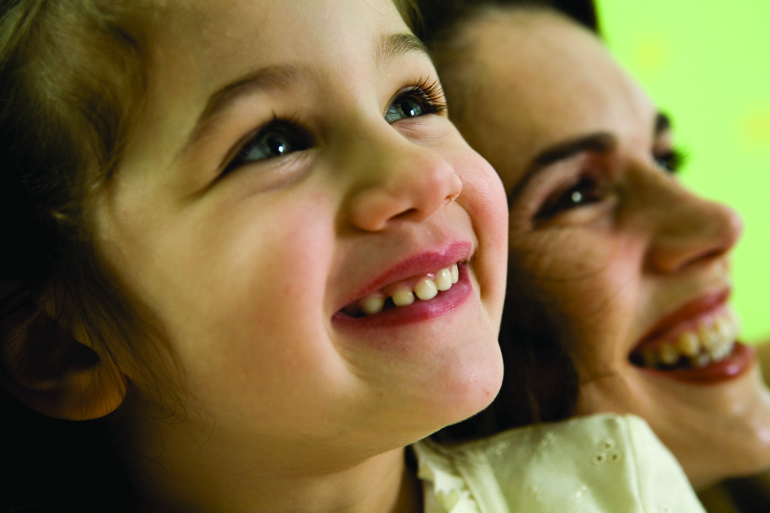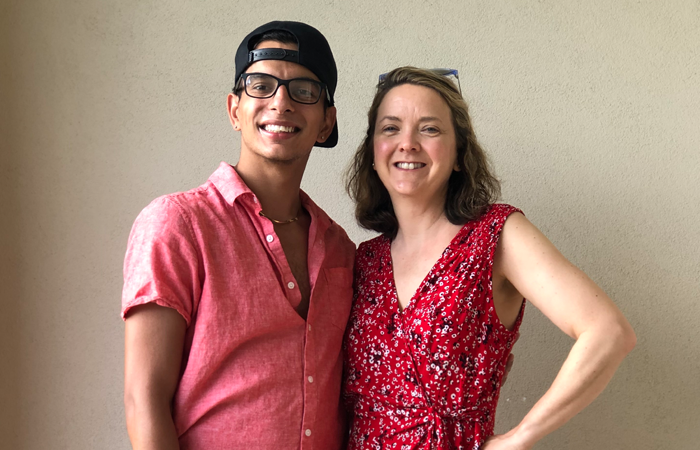Dawn was delighted that her four-year-old son, Kevin, could recite the story of his adoption. He seemed to accept his adoptive status and was proud of it. Then one day she heard him saying, “…and Jeremy’s adopted, and Ben’s adopted, and Adam’s adopted…”—naming all his friends who were born into their families. Kevin accepted his adoptive status so well because he had no concept of its being unusual. Sure, he grew inside another woman before coming to live with mommy and daddy. That’s how it’s done.
One problem in talking with children about adoption is that they often appear to understand more than they really do. Researchers at Rutgers University, including psychologist David Brodzinsky, found that children of roughly the same age have similar levels of understanding about adoption, whether or not they are in adoptive families. Children seem to develop a general understanding of what adoption is and how it works from their social environment rather than by accumulating information from their parents. Our job as parents, therefore, is not to explain the concept of adoption so much as it is to provide information about the child’s particular situation, as well as emotional support. The key is creating an environment where children feel comfortable discussing adoption — and know that you are, too.
Kids will need to have their adoption story repeated time and time again, because how children view adoption changes as they pass through different developmental stages. At one age a child wonders how old his birth parents were; at another, he’s more interested in the legal process of adoption. Fortunately, we now have some understanding of what children need to know at certain stages of development.
Preschoolers
A Little Information Goes a Long Way
The Rutgers researchers found that preschoolers usually cannot differentiate between being adopted and being born into a family. They seem so willing to accept their adoptive status because they don’t understand it. When preschoolers tell their story, they are usually just parroting what they’ve been told, not showing real understanding.
Parents who talk with preschoolers about being adopted should think of their discussions as a foundation for later elaboration. The goal should be for children to hear some of the adoption terms rather than to absorb adoption concepts.
Talking to children about their adoption is considered stressful by many parents, and the preschool years offer an opportunity to practice. When Kristy and Dan made their first “welcome home” book, one page read: “Then Kristy and Dan heard about a baby who didn’t have a mother or a father.” They read this to their daughter for a couple of years before they realized they were ignoring the existence of the birth parents and avoiding the issue of why she was placed for adoption. They changed the page to read: “Then Kristy and Dan heard about a baby whose mother and father couldn’t take care of a baby.” Their daughter didn’t seem to notice the change in the story line.
The job of talking about adoption has not ended just because discussions have seemingly gone well. The five-year-old who asks “Did I grow inside you, Mommy?” may be thinking about it for the very first time, even though he seemed to understand the circumstances of his birth at age three or four.
Ages Five to Seven
Awareness of Life and Death
Children in this age group are interested in life and death issues, such as “Where do puppies come from?” and “Where is heaven?” Around age six, the Rutgers researchers found, most children can differentiate between birth and adoption because they understand conception. Even parents who have talked about adoption before may have to start from the beginning with children of this age who are just now realizing what it means to be adopted.
Carol Williams, a leading social work educator and former head of the Children’s Bureau during the Clinton administration, says children in this age group need to know that they were born, just like every other person. Often adoptive parents begin by saying something like: “You know your friend Ben grew inside his mommy. But you didn’t grow inside me. Mommy and Daddy couldn’t make a baby, so we called an adoption agency, and they found a baby for us, and that was you.” This story, while accurate, skips an important step — the birth of the child. It is not unusual for the adopted child to conclude that “adopted” means being hatched or born through some other non-normal process. Knowing the circumstances of his birth can help a child understand that his birth was normal and had nothing to do with becoming available for adoption.
There are other reasons for starting with how the child was born. Talking about the child’s birth leads naturally into talking about why he was placed for adoption. It acknowledges that the child has a history that began before he joined the family, and communicates that it is okay to think and talk about that time.
We often leave the birth father out of the story, but we shouldn’t. The mother of five-year-old Kelly explained to her daughter that being adopted meant that she had grown in the uterus of another mother. When Kelly asked how babies were made, she responded accurately and matter-of-factly. It didn’t occur to her to discuss those two topics simultaneously, but Kelly put them together. Eventually it became clear that Kelly thought her adoptive father had impregnated her biologic mother. That was the only explanation she could come up with, given the information she had.
A scenario for talking with a five- to seven-year-old might be: “It was sperm from your birth father and an egg from your birth mother that made you. You grew inside your birth mother. When it was time for you to be born, you came out through her vagina.” Parents can add that this is usually a loving thing that happens between a man and a woman.
If the actual circumstances of the child’s birth aren’t known, a likely scenario can be discussed (“You probably were born in a hospital”), along with what probably or actually happened after birth and up to the time he was adopted. Parents should talk about reasons the birth parents were (or might have been) unable to take care of any baby.
The Rutgers study found that four- to seven-year-olds who had an idea of why parents place children for adoption thought children were placed for three main reasons: because of negative characteristics of the child, because of the parents’ financial problems, or because of lack of time to care for the baby. This is a good time to correct any misconceptions a child may have.
Children of this age believe their relationship to their adoptive family is permanent, but they aren’t sure why. They believe this because they have faith in whatever their parents say. They’ll soon come to question that belief.
Ages Eight to Eleven
Feelings of Separation & Loss
Children eight to nine years old are beginning to have a notion of “blood relations” and how they differ from other kinds of relationships. These children can now have a fuller understanding of birth and adoption. However, the Rutgers team found that most children cannot understand the legal system that makes their adoptive status permanent until about age eleven. This may cause the eight- or nine-year-old to feel unsure of his place in the adoptive family. It isn’t uncommon for children this age to think the biologic parents could possibly reclaim them.
The realization that someone made a decision to make an adoption plan for them hits children at eight or nine, and they may have a normal grief response. Parents may not expect their child to grieve for his birth parents so long after he was separated from them, and may not recognize that the child is reacting to his growing awareness of adoption. The child is unable to keep up emotionally with new information and awareness. Parents should encourage children to express feelings and let them know that it’s not only okay to feel sad, it’s perfectly normal. They should let their child know they understand what he is feeling sad about, and that it is okay to talk about his birth parents if he wants to.
The Rutgers researchers found that the older the child, the more likely he will be to focus on financial problems as a reason for placing a child for adoption. Children also consider the marital state of the parents, parental immaturity, family disharmony, and parental death as reasons for placing a child for adoption.
Carol Williams says a child at this age needs to know she’s not the only adopted person in the world and that, though she was adopted, she’s like other children. Because of their increasing understanding of relationships, eight- to eleven-year-olds may want to know about the birth parents’ relationship, particularly whether they were married. They may want to know if being conceived out of wedlock makes them different from other children. If they don’t already know, children at this age will be curious about where they were born.
Let the child take the lead. If she is asking a question, she is probably ready to deal with the answer.
Adolescents
Exploring Who They Are
By the age of twelve or thirteen, children understand that adoption involves the legal transfer of rights and responsibilities from the birth parents to the adoptive parents. They also have a better understanding of reasons children are placed for adoption.
The teenager’s job is to become a separate person from his parents. To do this, he has to learn who he is in relation to his parents. The adopted child must learn who he is in relation to two sets of parents before he can fully develop his own identity. It isn’t unusual for teenagers to become more curious about their birth parents. Parents need to communicate that this curiosity is all right. They also need to let the child know that they are open to talking about adoption, even initiating such discussions.
Through the years, parents need to make an effort to understand and provide what adoptees need to know. In many respects, it is the attitude we convey to children, not the words we use, that is most important. That attitude should be open, empathetic, and honest.
Article adapted with permission from Raising Adopted Children

